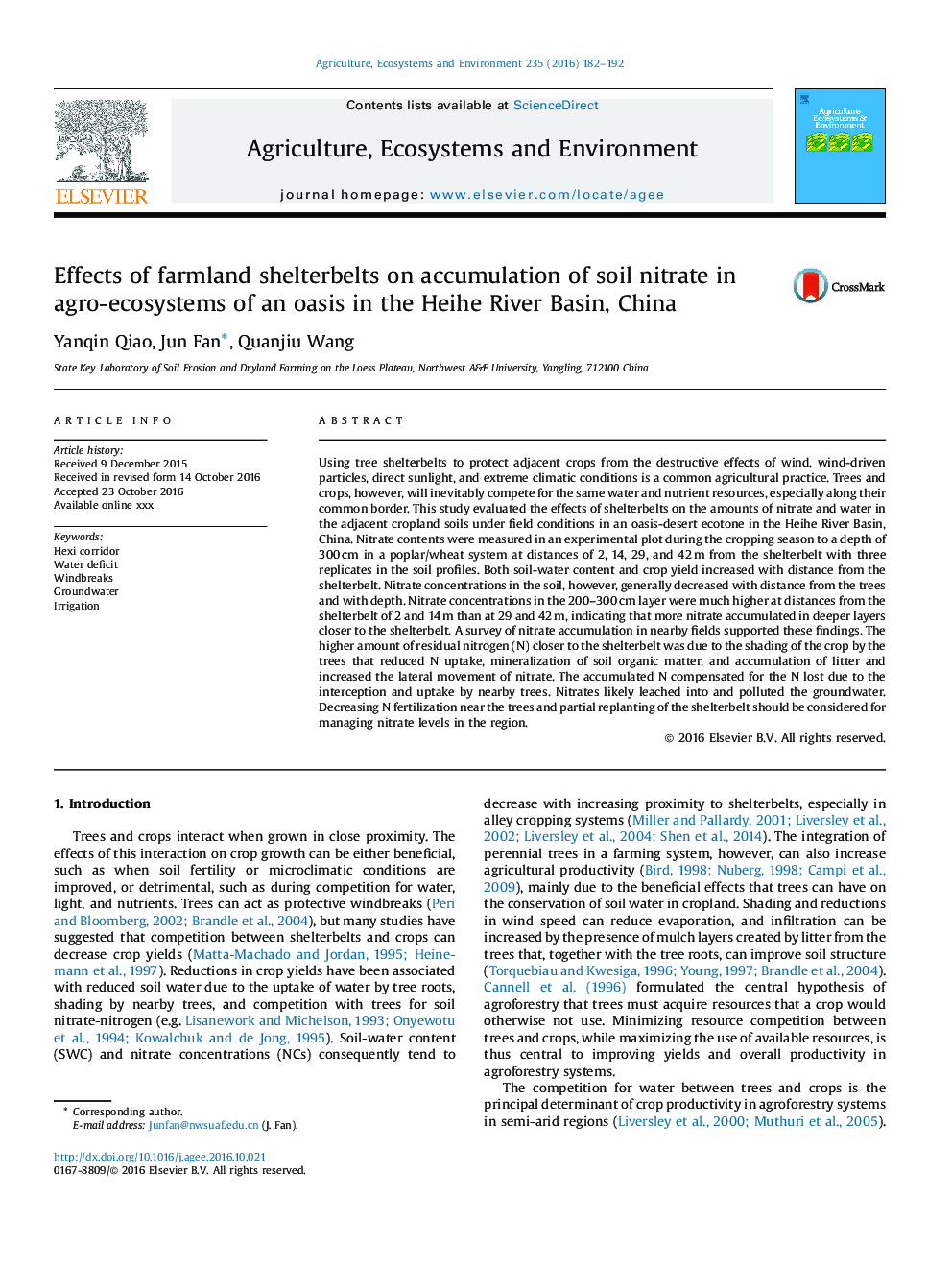| Article ID | Journal | Published Year | Pages | File Type |
|---|---|---|---|---|
| 5538081 | Agriculture, Ecosystems & Environment | 2016 | 11 Pages |
Abstract
Using tree shelterbelts to protect adjacent crops from the destructive effects of wind, wind-driven particles, direct sunlight, and extreme climatic conditions is a common agricultural practice. Trees and crops, however, will inevitably compete for the same water and nutrient resources, especially along their common border. This study evaluated the effects of shelterbelts on the amounts of nitrate and water in the adjacent cropland soils under field conditions in an oasis-desert ecotone in the Heihe River Basin, China. Nitrate contents were measured in an experimental plot during the cropping season to a depth of 300Â cm in a poplar/wheat system at distances of 2, 14, 29, and 42Â m from the shelterbelt with three replicates in the soil profiles. Both soil-water content and crop yield increased with distance from the shelterbelt. Nitrate concentrations in the soil, however, generally decreased with distance from the trees and with depth. Nitrate concentrations in the 200-300Â cm layer were much higher at distances from the shelterbelt of 2 and 14Â m than at 29 and 42Â m, indicating that more nitrate accumulated in deeper layers closer to the shelterbelt. A survey of nitrate accumulation in nearby fields supported these findings. The higher amount of residual nitrogen (N) closer to the shelterbelt was due to the shading of the crop by the trees that reduced N uptake, mineralization of soil organic matter, and accumulation of litter and increased the lateral movement of nitrate. The accumulated N compensated for the N lost due to the interception and uptake by nearby trees. Nitrates likely leached into and polluted the groundwater. Decreasing N fertilization near the trees and partial replanting of the shelterbelt should be considered for managing nitrate levels in the region.
Related Topics
Life Sciences
Agricultural and Biological Sciences
Agronomy and Crop Science
Authors
Yanqin Qiao, Jun Fan, Quanjiu Wang,
